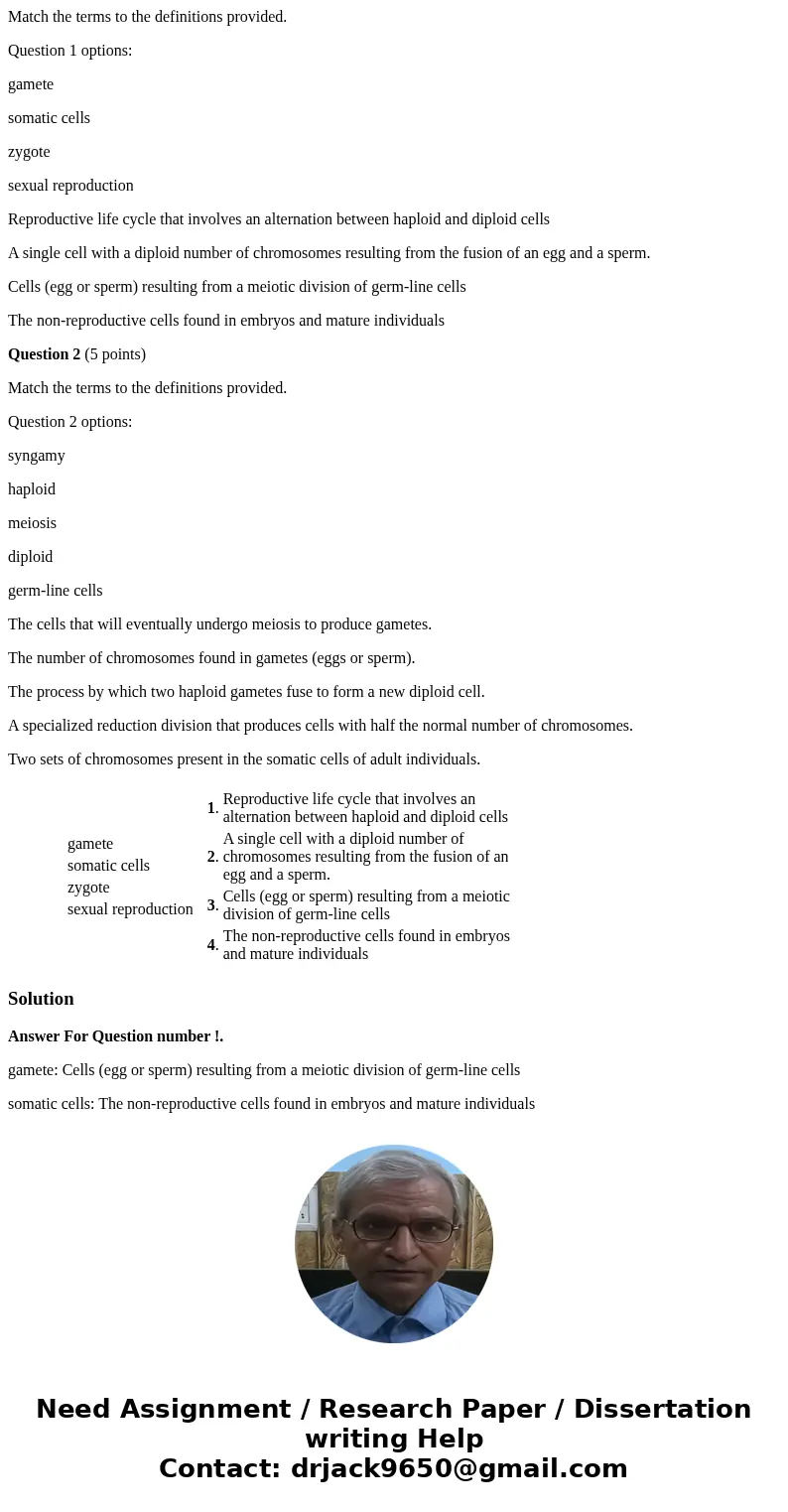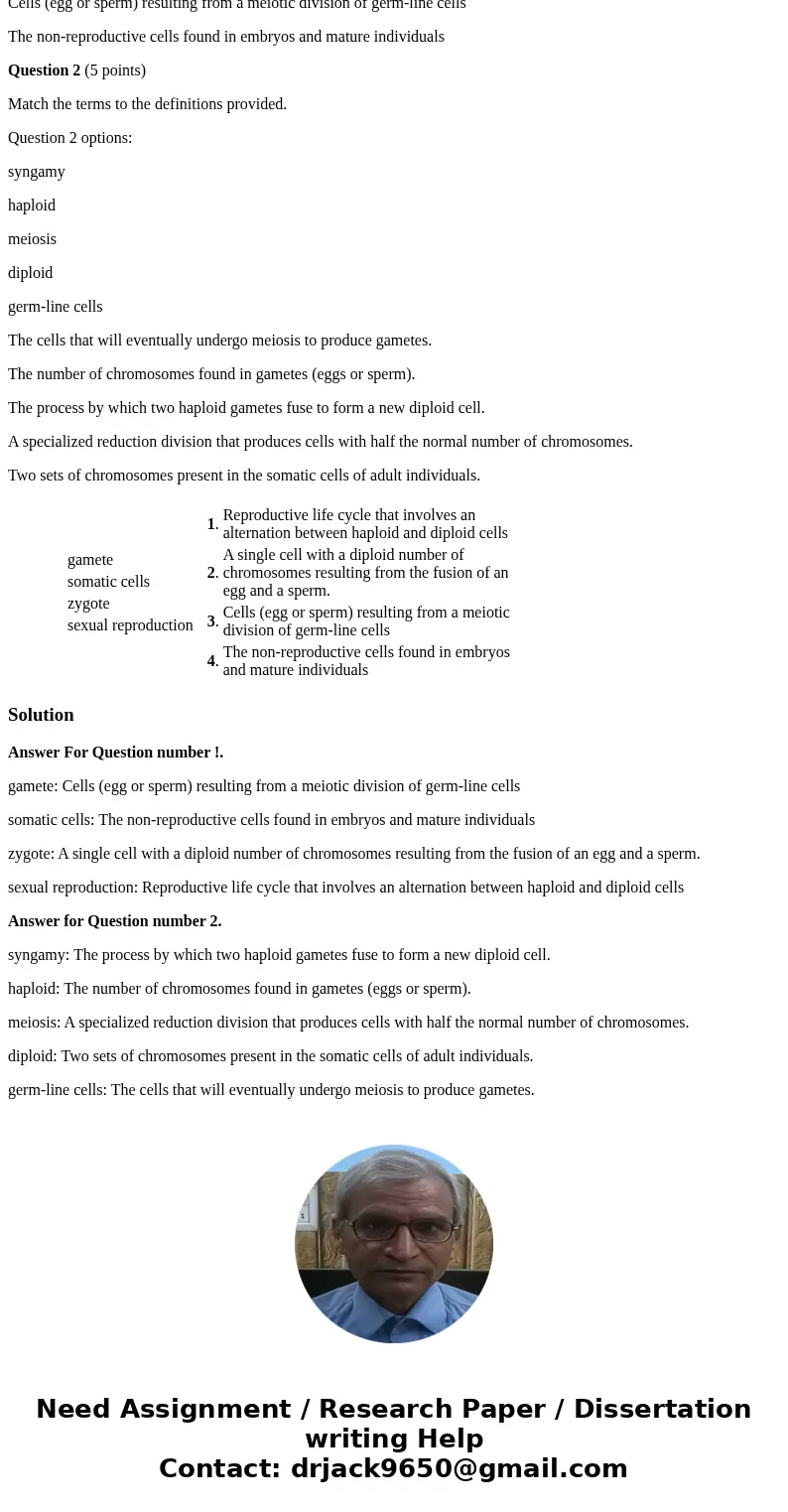Match the terms to the definitions provided Question 1 optio
Match the terms to the definitions provided.
Question 1 options:
gamete
somatic cells
zygote
sexual reproduction
Reproductive life cycle that involves an alternation between haploid and diploid cells
A single cell with a diploid number of chromosomes resulting from the fusion of an egg and a sperm.
Cells (egg or sperm) resulting from a meiotic division of germ-line cells
The non-reproductive cells found in embryos and mature individuals
Question 2 (5 points)
Match the terms to the definitions provided.
Question 2 options:
syngamy
haploid
meiosis
diploid
germ-line cells
The cells that will eventually undergo meiosis to produce gametes.
The number of chromosomes found in gametes (eggs or sperm).
The process by which two haploid gametes fuse to form a new diploid cell.
A specialized reduction division that produces cells with half the normal number of chromosomes.
Two sets of chromosomes present in the somatic cells of adult individuals.
|
|
Solution
Answer For Question number !.
gamete: Cells (egg or sperm) resulting from a meiotic division of germ-line cells
somatic cells: The non-reproductive cells found in embryos and mature individuals
zygote: A single cell with a diploid number of chromosomes resulting from the fusion of an egg and a sperm.
sexual reproduction: Reproductive life cycle that involves an alternation between haploid and diploid cells
Answer for Question number 2.
syngamy: The process by which two haploid gametes fuse to form a new diploid cell.
haploid: The number of chromosomes found in gametes (eggs or sperm).
meiosis: A specialized reduction division that produces cells with half the normal number of chromosomes.
diploid: Two sets of chromosomes present in the somatic cells of adult individuals.
germ-line cells: The cells that will eventually undergo meiosis to produce gametes.


 Homework Sourse
Homework Sourse